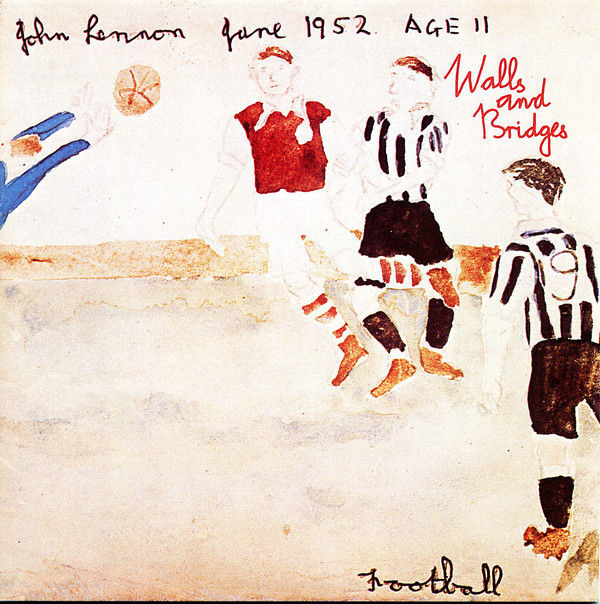Apple 3416
Producer: John Lennon with the Plastic Ono Nuclear Band / Little Big Horns and The Philharmonic Orchestrange
Track listing: Going Down on Love / Whatever Gets You Thru the Night / Old Dirt Road What You Got / Bless You / Scared / #9 Dream / Surprise, Surprise (Sweet Bird of Paradox) / Steel and Glass / Beef Jerky / Nobody Loves You (When You’re Down and Out) / Ya Ya

November 16, 1974
1 week
Imagine, John Lennon’s first solo commercial triumph, came during a time of harmony and happiness in his personal life. Lennon’s next chart-toper, Walls and Bridges, occurred when he was close to hitting bottom.
Following the success of Imagine, Lennon once again made a stylistic left turn. His 1972 double-album Some Time in New York City, which had him backed by Elephants Memory in the studio and the Mothers of Invention in concert, stalled at number 48 and featured some of the weakest material of his career, while Mind Games, his 1973 album, marked a return to Imagine-styled sounds and reached number nine, but was still not fully up to par artistically.
In March 1973, Lennon began battling with the U.S. Immigration Service, which was attempting to deport him because of a five-year-old British drug conviction. Months later, he split from his wife Yoko Ono and went on what he termed “a lost weekend,” a period in which Lennon lived the rock ‘n’ roll excesses to the hilt, often drinking heavily. The temporary split was supposed to last six months, but ended up lasting three times that long. During this period Lennon’s constant companion was May Pang, who had formerly worked as a personal assistant for him and Ono. Pang even received the credit “production coordinator” on Walls and Bridges.
Although Lennon and Ono were separated at the time, they spoke on the phone daily. In fact, their separation fueled much of the material on Walls and Bridges, including the track “Going Down on Love” and “Scared.” Says Ono, “It had a lot to do with us being separated. There were a lot of messages to me in those songs.”
Lennon recorded Walls and Bridges at the Record Plant in New York during the summer of 1974. “It was a rough period for John,” Ono adds. “But it showed that even though he was going through a period of personal trauma, it didn’t affect him creatively.”
Lennon’s desperation is apparent in “Whatever Gets You Thru the Night,” which featured a guest appearance by Elton John on keyboards and backing vocals. (The British rocker also sang harmony on “Surprise, Surprise.”) “John promised Elton that if ‘Whatever Gets You Thru the Night’ went to Number One, then he would perform with him at Madison Square Garden,” Ono says.
Sure enough, Lennon scored his first Number One single (becoming the last of the ex-Beatles to do so) with “Whatever Gets You Thru the Night” just as Walls and Bridges ascended to the summit of the album chart. On Thanksgiving Night 1974, Lennon joined Elton John onstage, where they performed “Whatever Gets You Thru e Night,” “Lucy and the Sky with Diamonds,” and “I Saw Her Standing There.” (The latter track was released as the B-side of Elton John’s 1975 Number One single “Philadelphia Freedom.”) It would turn out to be Lennon’s final concert performance.
Elton John wasn’t the only guest on Walls and Bridges. Harry Nilsson contributed backing vocals to “Old Dirt Road” (Lennon had produced Nilsson’s 1974 album Pussycats) and Lennon’s son Julian played drums on “Ya Ya.”)
The cover art of Walls and Bridges consisted of paintings Lennon had made at the age of 11. “That was very important to John,” says Ono, “because that had a lot to do with the music on the album. He was really delving into his youth and bringing out emotions from it.”
THE TOP FIVE
Week of November 16, 1974
1. Walls and Bridges, John Lennon
2. Photographs & Memories, His Greatest Hits
Jim Croce
3. It’s Only Rock ‘N Roll, The Rolling Stones
4. Holiday, America
5. Not Fragile, Bachman-Turner Overdrive
